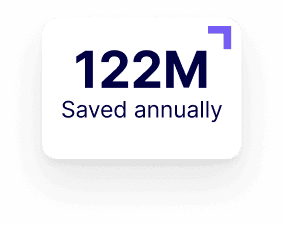Key takeaways
- Centralize and automate scheduling to eliminate manual tasks and reduce errors, leading to hours saved every week.
- Empower physicians with self-service tools for shift swaps and real-time updates, improving workplace satisfaction and lessening administrative burden.
- Leverage advanced rules and automation to create fair, compliant schedules that optimize workload and enhance patient access.
Scheduling requires critical time during the already busy days of physicians. This often becomes a source of fatigue, stress, and frustration among healthcare leaders responsible for patient wellbeing.
Fortunately, the right technology optimizes scheduling to provide professionals with more time to support their patients. In turn, we improve our strained healthcare systems.
Based on thousands of physicians who use Petal scheduling solutions each year, our team has identified seven sources of wasted time—and ways to avoid them.
1. Centralize and standardize absence requests
Many planners waste time manually compiling absence requests from multiple sources, such as emails, phone calls, texts, or even handwritten notes. The larger the group, the harder it becomes to track and organize these requests.
Tip: Standardize your absence submission process to simplify future planning.
When all members use the same digital tool, requests are automatically logged, time-stamped, and integrated into the scheduling system. This leads to faster processing and fewer errors.
2. Establish and follow planning rules
Making changes to shared schedules is complex and time-consuming. This is especially true when accessed by physicians, nurses, and administrative staff, and while some changes are inevitable, clear planning rules minimize disruptions and promote fairness.
Consider implementing the following rules:
- No on-call assignments within two weeks of a previous on-call shift
- Maximum of five consecutive night shifts
- No morning assignments following an evening shift
- No more than one specialty task within three consecutive weeks
Advanced solutions like Petal Workforce allow you to generate fair and compliant schedules with department-specific rules and staff preferences. This includes union or staff agreement rules that must be followed. These structured rules support fair shift management and limit avoidable change requests.
3. Allow physicians to manage replacements independently
When two physicians want to trade shifts, the process can be slow, manual, and often requiring planner verification and staff notifications.
With self-serve scheduling capabilities, planners can empower physicians to swap shifts independently while maintaining control. This enables self-service shift exchanges with built-in approval workflows for complex tasks.
Did you know: Petal helped the University Hospital Network resolve 98% of change requests autonomously within one hour?
Every replacement is instantly reflected in the shared schedule—no extra coordination required.
Petal reduced time spent planning by 98% at the University of Montreal Hospital Centre.
4. Communicate schedule changes instantly
Time is often lost due to poor communication of post-publication changes—especially for on-call shifts. Miscommunication leads to physicians being called unnecessarily or missed coverage in critical situations.
Tip: Nurses, pharmacists, and physicians use specialty-based call-outs to target specific specialists based on real-time availability, location, and seniority.
Petal Automated Scheduling allows automatic alerts to be sent instantly to all impacted users, reducing the administrative burden and preserving continuity of care.
To ensure patient safety and minimize confusion:
- Implement automated notifications
- Use scheduling tools that update in real time
- Ensure all changes reach the right staff immediately
5. Filter physicians and tasks by subsets
Planning complex schedules requires visibility into every member’s availability and skills. Manual compilation wastes time in both large and smaller teams.
This wasted time and increased frustration among staff members creates barriers to achieving work-life balance. Healthcare professionals perform better when they feel better. Provide your team with a framework for successfully navigating schedule processes to facilitate more energy for patient care. Digital scheduling tools accelerate planning by grouping physicians and tasks into searchable categories.
Common filters include:
- On-call vs. consulting tasks
- Day, evening, or weekend shifts
- Resident year or subspecialty
- Department chiefs or external physicians
By digitizing these categories, planners create efficient, equitable schedules faster and with fewer errors.
6. Display meetings on the schedule
Department meetings and training sessions often complicate scheduling. Physician scheduling software should add these events directly into your shared calendar and send invitations automatically.
Did you know: Petal Workforce was recognized in Gartner’s 2025 and 2024 Hype Cycles for Real-time Health System Technologies?
Physicians can accept or decline invitations within the platform, and responses are tracked in real time.
This ensures:
- Immediate visibility of who’s attending
- Simplified coordination for large teams
- Reduced follow-up work for planners
7. Automate schedule creation using specialized solutions
The more complex a schedule, the greater the benefit of automation. At Petal, 37,000+ physicians already leverage automated planning features to reduce manual work and improve scheduling accuracy.
Automation considers physician constraints, planning rules, and workload balance to generate optimized schedules. The planner simply reviews or adjusts as needed.
This digital approach saves hours of manual labor and allows planners and physicians to focus on what matters most: access to care and improved patient outcomes.
Looking ahead
Manual scheduling drains valuable time and resources that could otherwise be spent improving patient care. Adopting physician scheduling software transforms operations, enhances shift management, and supports the ultimate goal: better access to care for every patient.
Save more time for patients with smarter scheduling.



